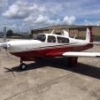-
Members Online
- ferlores
- UteM20F
- vik
- raymondscott0321
- donkaye
- NickG
- Lumberg
- bamace
- Bolter
- Red Leader
- Vance Harral
- OR75
- 47U
- TCC
- BlueSky247
- 1980Mooney
- kortopates
- ericrynehess
- MDMooney
- eman1200
- 00-Negative
- DanM20C
- Kelpro999
- Schinderhannes
- Gilt
- ToddCC22
- haymak3r
- Rwsavory
- slowflyin
- exM20K
- Raistlin
- Al Matt
- Skyland
- Paul Thomas
- Don Gates
- midlifeflyer
- N204TA


Recommended Posts
Join the conversation
You can post now and register later. If you have an account, sign in now to post with your account.